Wim Wenders’ Until the End of the World (1991):
Criterion Blu-ray review
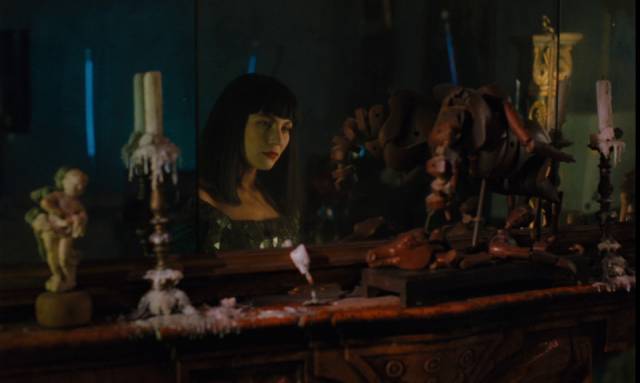
Wim Wenders began work on what would become his biggest, most ambitious film in 1977, but it was only after the international success of Wings of Desire (Der Himmel uber Berlin, 1987) that he was able to begin raising the necessary budget. At $24 million, it would be the most expensive German film made up to that point … not to mention one of the most expensive independent “art” films ever. In 1990, Wenders, his cast and small crew embarked on a gruelling year-long Odyssey which took them to nine countries on four continents, incorporating what at the time was cutting edge high-definition video technology to create a near-future science fiction epic, which attempted to capture the world as it rushed towards the new millennium.
Unfortunately, Wenders had contracted with those providing the budget to deliver a film of two-and-a-half hours. His cut came in at just under five hours, but despite his efforts, the backers wouldn’t budge. Forced to cut out more than two hours, compressing a sprawling narrative into something which rushed through events and themes without time enough to breathe, Wenders saw his dream project crash at the box office in 1991 and receive at best tepid critical notices.
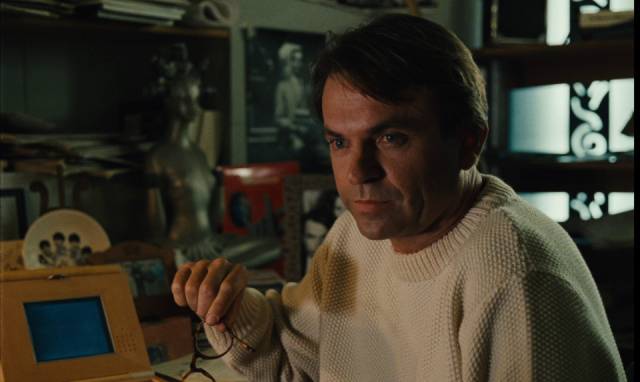
However, he clung to a hope that the film might one day be seen as he had intended. Using his own money, he preserved the original negative, striking a dupe for the cut-down. By the end of the ’90s, with the world catching up to the film, distribution and movie-watching itself were undergoing great changes and with the arrival of the new millennium Wenders finally got his wish; the full-length director’s cut was released on home video, enabling a re-evaluation of what had seemed a Quixotic failure.
I knew none of this background when I first saw Until the End of the World in a theatre in 1991; it seemed a confusing mess shot through with beautiful imagery and a mix of themes which never really came together coherently – a work of sometimes striking fragments that ultimately didn’t amount to a satisfying whole. My opinion changed somewhat when I saw the 287-minute director’s cut on a three-disk Italian DVD in 2003. But I still wasn’t sure that it held together.
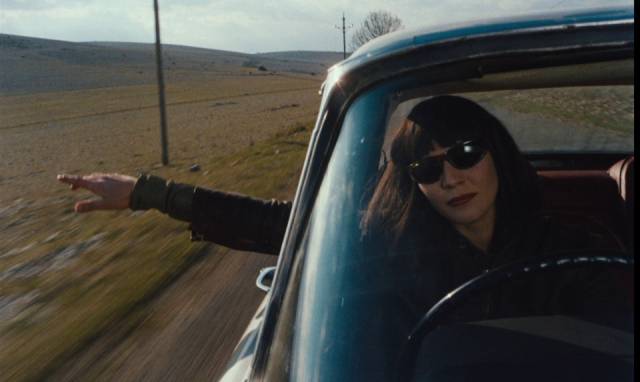
Now, sixteen years later, seeing it for the third time on Criterion’s two-disk Blu-ray, I was swept away by the absolutely stunning 4K restoration of Robby Mueller’s breathtaking photography. But perhaps more importantly, it’s possible to see that we have since caught up with Wenders’ narrative strategies; Until the End of the World now looks like a precursor to the kinds of long-form storytelling we have become used to in complex productions for cable and streaming. Watching the film’s almost five hours feels like binging a profligately inventive mini-series which moves in strange rhythms, with themes and tones developing, evolving and continuously folding in on themselves. While in the first half it races around the world in a parody of espionage thrillers, in the second it arrives at a point of stillness and inertia – an illusion of freedom and movement giving way to an illusion of entrapment.
As with almost any very long film, Until the End of the World toys with the risk of overwhelming the audience – if it holds too closely to a particular tone or rhythm, it may exhaust a viewer’s attention; if it constantly shifts and changes, it risks spinning off into random fragments. Wenders works hard to maintain a balance which continually offers something new while holding to certain threads which run through the busy narrative to build a coherent impression. It demands of its audience sustained and patient attention, rewarding us along the way with surprising details – dramatic, funny, moving, even at times annoying. It’s a film meant to be experienced, not passively consumed.
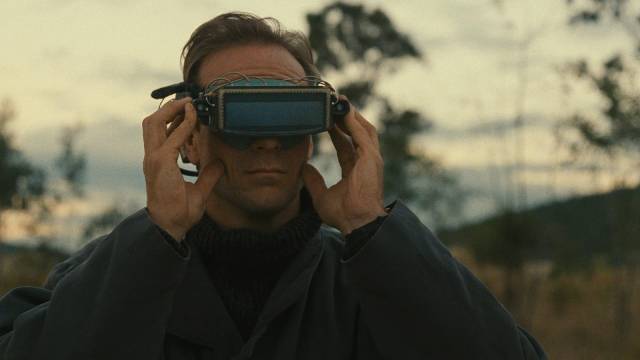
While it is inevitably reductionist to assert that such a creation is “about” a particular thing, Wenders’ film is organized around two principle concepts – our relationship to narrative, how we experience stories, and our relationship to words and images, and how the two can simultaneously be in communion and in conflict with one another.
But before we get to that, the story…
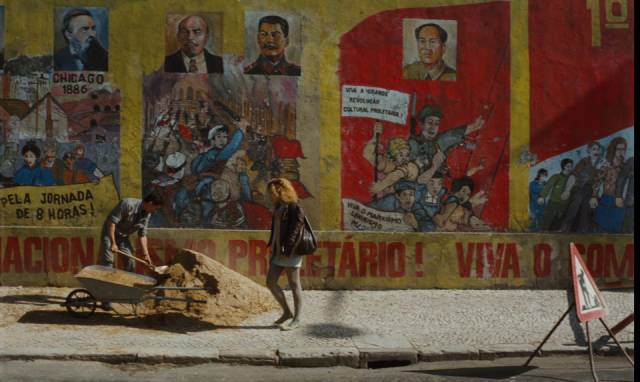
Over views of barren landscapes from space, a voice tells us that in the last months of 1999 an Indian nuclear satellite has drifted out of orbit and no one knows where it will crash or how devastating the effects will be. This lingers in the background throughout, with news reports detailing international panic and fighting among nations at the U.N. as the U.S. threatens to go against the consensus and explode the satellite in orbit. But, as the narrator tells us, Claire doesn’t care.
Claire (Solveig Dommartin) wakes in a daze at a party in Venice, staggers away, takes a water taxi to her car on the mainland and begins driving back to France. Escaping from a lover’s betrayal, Claire is overcome by aimlessness and ennui. Her lack of direction lays her open to the play of chance and the film declares itself as a kind of fairy tale when, in order to free herself from the inertia of a highway traffic jam, she cuts across country and heads down a deserted road across an open plain.
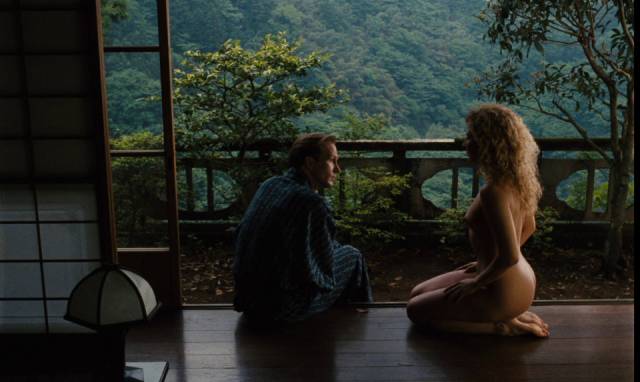
All of this positions Claire as the film’s protagonist, and yet we learn that her story is being told by Eugene (Sam Neill), a writer who is also the lover who betrayed her. Her story is being told and shaped by a man who may have his own motives to portray her in a certain way. The machinations of chance, at least as related by Eugene, seem to further strip Claire of self-directed autonomy; even as she begins to make choices about the direction her life is taking, for much of the film she remains in the power of external forces.
On that lonely road, as she begins to pass the only other car in sight, that car’s driver tosses an empty beer bottle out of his window, smashing Claire’s windshield and causing both cars to crash. Although badly damaged, Claire’s car still runs and she gives the two men a lift. It turns out that they are a pair of criminals who have just robbed a bank in Nice. Claire makes a deal with them to take their bag of money to Paris for a 30% cut. Despite the risks, there doesn’t seem to be a sense of danger, and in time we discover that the pair, Chico (Chick Ortega) and Raymond (Eddy Mitchell), are actually nice guys – the first instance in the film of what becomes a pattern: throughout her journey Claire seems to meet only nice, friendly, helpful people … with the threat of global destruction hanging overhead, people are uniformly decent. This ought to cause narrative problems, particularly in such a long film, because it essentially removes all dramatic conflict. For this missing element, Wenders substitutes constant movement, missed connections, misunderstandings … the mechanics of narrative momentum which in some ways distract us from the gradual revelation of character.
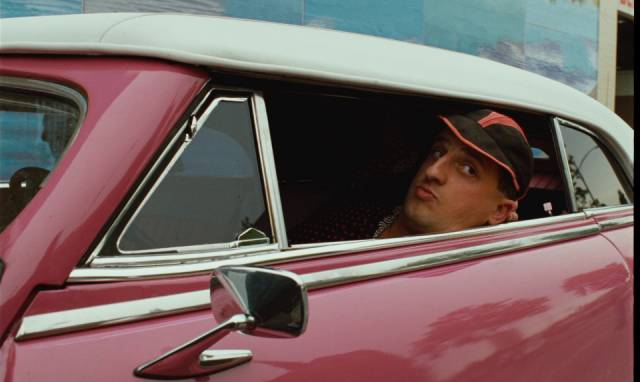
While on her courier mission, Claire has her next chance encounter while making a call to her friend Makiko (Adelle Lutz) in Paris at a bank of video phones. At the next phone is Trevor McPhee (William Hurt). They exchange a few words, and moments after he leaves another man turns up, asking Claire where the guy went. She is suspicious of this man’s urgency – with good reason, as he turns out to be a bounty hunter on Trevor’s trail. When she collects her partially repaired car, Trevor jumps in and asks her to help him get away from the bounty hunter.
Something changes for Claire on the drive to Paris. Once she’s dropped Trevor off, she gains a sense of purpose, needing to understand the as yet unknown mission he’s engaged on. From this point, the film is driven by her pursuit of him, drawing in all the other people in her life and accumulating others. Eugene still wants her back and has to deal with the fact that her emotional attention has shifted to Trevor; the bounty hunter, Burt (Ernie Dingo), follows her in his quest to find Trevor; Chico tags along because she’s still got the money; and detective Phillip Winter (Rudiger Vogler) uses his up-to-date computer tools to help track Trevor, who moves from Paris to Berlin to Lisbon to Moscow to China to Japan to San Francisco and finally to Australia.
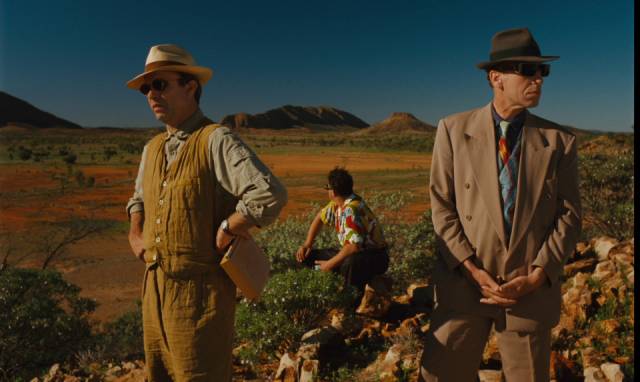
Paths cross, people appear and disappear … and Claire falls in love with Trevor, who is eventually revealed to be Sam Farber, son of a scientist who has invented a camera which records not just images but the brainwaves of the person using it; by running these signals back through a computer, these images can be transmitted to the brain of a blind person so that they can see. Sam stole the camera from the Americans and is travelling to gather images and messages from his siblings and other family members to take back to his mother who has been blind since she was eight.
But his desire to enable her to see again is taking a terrible toll; the camera is gradually destroying his own sight. Claire becomes an essential aid to his mission.
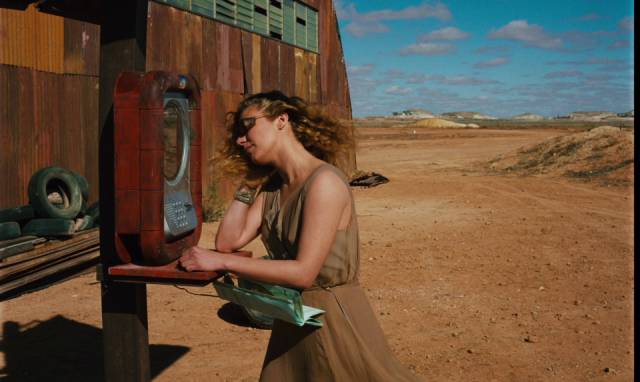
All this information comes to us in bits and pieces which we only fully comprehend once everyone arrives in Australia. It’s easy to understand why the producers became frustrated; for more than two hours, there’s unending activity, a sense of busy-ness, but we don’t know where it’s all heading. Viewed conventionally, much of this may seem aimless, prompting a desire to get to Australia as quickly as possible by cutting out a lot of intermediate steps. But Wenders’ intentions aren’t conventional. For a filmmaker whose work is virtually synonymous with the term “road movie”, the travelling itself is largely the point – what we see along the way and how that affects the characters on the journey.
The activities of Claire, Trevor/Sam and all the others become a way of surveying a world in flux, where past, present and future are intertwined. We get a sense that this world – our own history – is something constantly forming and renewing itself, building on the past, but not knowing where it’s heading. The satellite comes to represent the contingency we all live with all the time, the possibility that our stories as individuals and as a vast collective can end arbitrarily at any moment. Wenders’ curiosity about the world supersedes narrative and in the various places where he films he finds echoes of Blade Runner’s polyglot metropolis, a mixture of excitement and nightmare in which the ancient remains embedded in the modern. The world itself, the physical creation of human societies, is a complex, multi-layered historical narrative driven by invention and contingency.

Approaching the halfway point, facing a kind of sensory overload, movement abruptly comes to a stop – Sam loses his sight and he and Claire take a random train out of Tokyo, arriving in a quiet rural area where they stop at a small inn. This is the first time the film has shown us the natural world since that barren plain where the cars crashed. In contrast, this is lush and green, a place where human activity blends in rather than dominates. It also offers the most cinematically self-referential moment in a film loaded with visual echoes of other films; at the inn, the pair meet an elderly Japanese couple played by Chishû Ryû and Kuniko Miyaki, who among other Ozu Yasujirô films played the couple at the heart of Tokyo Story (1953). Mr. Mori (Ryû) prepares a mixture of herbs which Claire must apply daily to Sam’s eyes; this peaceful oasis and the tender care of the couple from cinema’s past restore the vision which the hectic modern world has almost destroyed.
Restored, Sam and Claire fly to San Francisco for one more recording session, meeting up with Chico who has brought money to help them continue their journey. The three of them take a ship to Australia, where they run into Eugene and Winter. The reunion is rocky – Eugene still resents Claire’s romantic attachment to Sam, even though he realizes he’s not going to get her back. After a fight and a run-in with the police, Sam and Claire get away in a small plane, heading deep into the outback. While they’re in the air, the satellite finally explodes, the electromagnetic pulse immediately destroying all electrical equipment. Sam has to glide the plane to a landing, and they set off across the desert on foot. The explosion figuratively blasts them back to the Stone Age as they literally walk into a world which hasn’t changed in millennia.
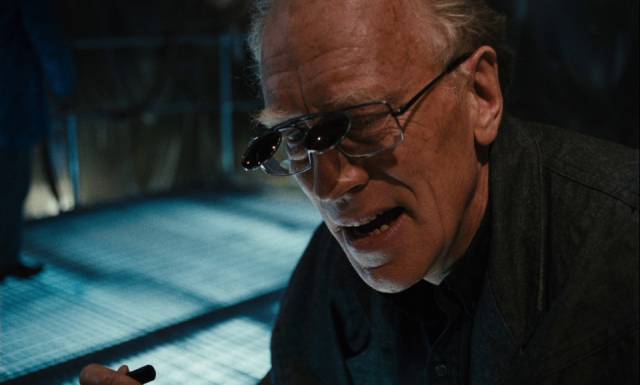
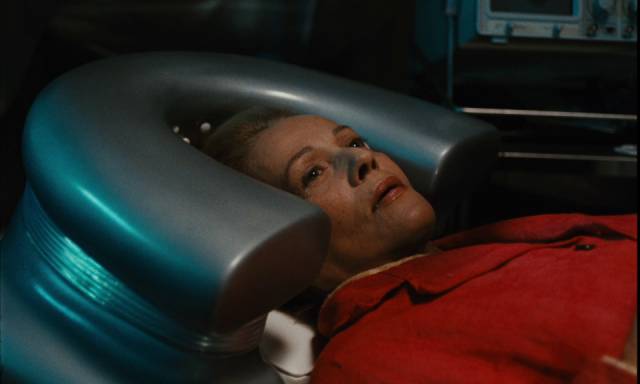
Once again they encounter Eugene, Winter and Chico, this time riding in the back of a “hand-cranked diesel” truck. With the world as they knew it seemingly ended, their personal conflicts no longer matter, and they finally arrive at a small remote community where Sam’s father Henry Farber (Max von Sydow) has established a lab deep in a cave, aided by some technicians and supported by a group of Aborigines to whom he has provided medical aid. In this primal place, his science exists alongside the ancient spiritual and oral traditions which bind the Aborigines to the land in a symbiotic relationship. Here, the dramatic focus shifts conclusively to Sam as he struggles with his life-long desire to receive some kind of emotional acknowledgement from his father; while he stole the camera and travelled around the world risking his own sight to enable his mother to see again, on a deeper level he took the risk so that his cold and distant father might finally see him. Counter to predictable narrative expectations, this never happens.
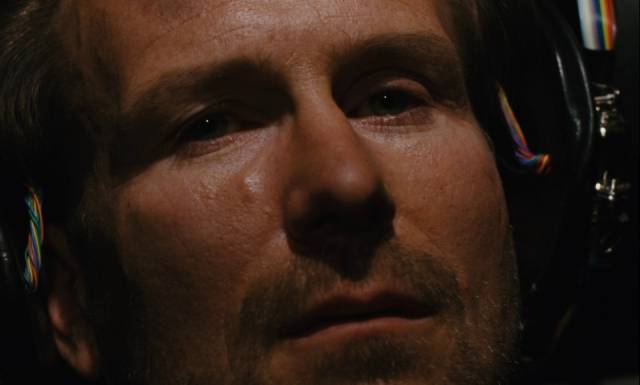
Having linked Sam and the camera to his computers, Henry is finally able to give his wife Edith (Jeanne Moreau) the experience of seeing her children and grandchildren for the first time. Of course, the casting of von Sydow and Moreau, like that of Chishû Ryû and Kuniko Miyaki, allows Wenders to bind his film to other strands of cinema history – Ingmar Bergman and the French New Wave – while the highly processed digital imagery of the experimental camera’s recordings suggests both the breakdown of cinema and possible future directions. Wenders had made use of the brand new high definition facilities at NHK, the Japanese television network, to deconstruct images, breaking them down into pixels and reassembling them like moving impressionist paintings (somewhat offending the Japanese technicians who saw this as a violation of HD’s potential for absolute clarity). Here, the apparent objectivity of photography gives way to subjectivity.
This drift becomes the focus of the final stage of the film. Having proved the camera’s abilities, Henry embarks on a new project – using it to record not the external world, but the images inside a subject’s brain, to record thoughts and dreams. This horrifies the Aborigines, who see it as an intrusion into the essence of their spiritual connection to the world. Some of Henry’s assistants abandon him, but he forges ahead with both Sam and Claire participating.
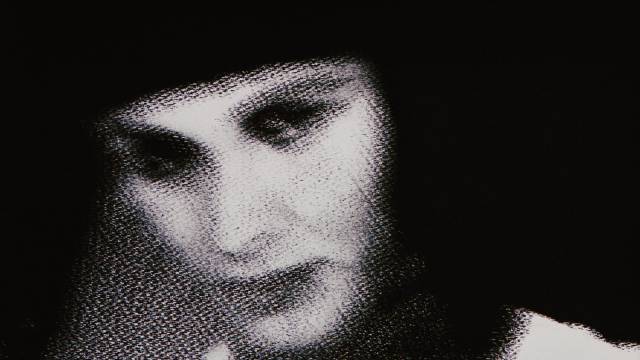
While Eugene, Winter, Chico and even Burt have become an integral part of the community outside the lab – largely through their shared creation of music – Sam and Claire become isolated within themselves. This is perhaps where Wenders reveals himself to be most prescient; Henry’s machinery, like our now ubiquitous personal devices, allows Sam and Claire to become immersed in a solipsistic subjective world consisting of images of themselves – the ultimate extremes of the selfie, watching their own dreams and memories on their handheld screens, reliving past emotions endlessly. They become consumed by images which separate them from everything which physically surrounds them. The film’s most disturbing image is of the two of them sitting near one another but totally absorbed in their individual screens – much like so many of us sitting together in a coffee shop staring at our own phones rather than engaging with the people around us.
All through the second half of the film, Eugene has been writing on an old typewriter, typing out the story we have been and still are watching. He is driven by a sense of urgency as he watches Claire becoming more lost. She has been reduced to a preverbal state – at one point driven to despair when the battery of her device dies, cutting her off from the memories she has become addicted to. Having finished his book, Eugene gives the manuscript to Claire and she gradually begins to turn the pages … Wenders has reached a point where images have become dangerous and psychologically destructive; he offers the written word as an antidote. The long second half of the film has sunk into stasis, fitfully interrupted by exuberant bursts of impromptu music – outwardly-directed creativity – and what finally breaks it free is Claire being able to read her own story, experiencing the world not through images but rather through words. Echoing the way in which the Aborigines hold their world together by continually reiterating it through songs.
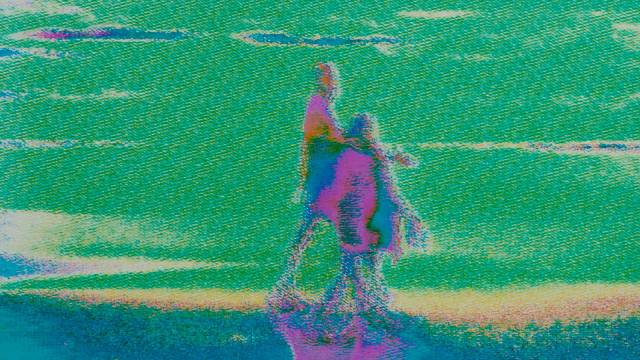
Only in retrospect is it clear how Wenders has been playing with the way narrative works in the film. It begins focused on Claire (though this is Claire as filtered through/created by Eugene); by the time we arrive in Japan, it has become Sam’s story – the story, that is, of his intense (Oedipal) family conflicts, his desire to serve his mother and please his distant, all but inaccessible father; but once his mission with regard to his mother has been completed, as he and Claire sink into their respective self-referential black holes, it becomes clear that the narrative belongs to Eugene, to the writer who has from the beginning conjured this story with his words. For all the film’s visual richness, its stream of events, Wenders ultimately privileges the written word – which itself is merely a modern variation of the oral tradition by which the Aborigines create and sustain their world. When the film was made, we hadn’t quite yet become so mired in a vast ocean of images, many of which reflect ourselves rather than the world which we inhabit, yet Wenders was already warning us of the danger and arguing for a rediscovery of language as the primary motor for communication, for connecting us one to another.
Ironically, in his longest, most elaborate movie, Wenders offers a warning about the dangers of cinema obliterating our ability to engage with the world in which we live, a world which is in danger at every moment of flying apart because our grasp of it is so tenuous. Like the Aborigines, we need to keep narrating it into existence and the danger is that our technologies continuously distract us from that task.
*
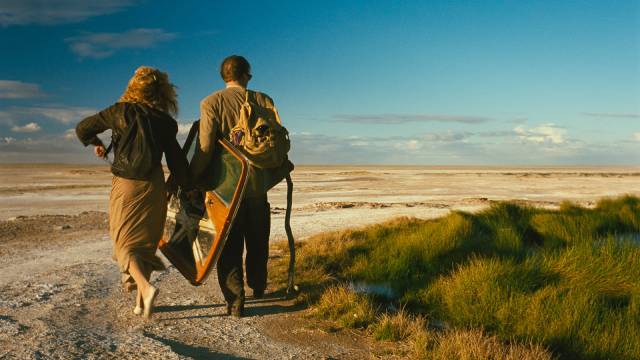
The disk
As already mentioned, Criterion’s Blu-ray is visually spectacular. The 4K restoration immerses us in Robby Mueller’s imagery – another layer of irony as the film warns us of the dangers of such immersion. The 5.1 DTS-HD Master Audio soundtrack foregrounds Wenders’ distinctive use of music to comment on and move the narrative forward. The extras put a lot of emphasis on the music as it was a key part of the film’s conception; during development, Wenders had written to his favourite bands, inviting them to contribute a new song in a style in which they thought they might be working ten years in the future. All but two responded, contributing songs appropriate to various parts of the script. While the film itself failed commercially, the soundtrack album became a huge success … and in fact remains possibly the best song-based soundtrack ever put together.
The supplements
The two-disk set includes more than three hours of extras, spread across both disks. On disk one, Wenders provides an interesting introduction (13:54), in which he recounts the troubled history of the production, the original abortive release, and the film’s eventual resurrection. There’s a featurette in which he explains the origins of the soundtrack (15:31) and a brief piece in which he and David Byrne talk about the music (8:18). There is an assembly of deleted scenes and fragments (31:11) and a documentary from 1991 by Uli M. Schueppel about Nick Cave recording his contribution to the soundtrack (18:10).
On disk two, there’s an interview with Wenders from 2001 about the resurrection of the director’s cut (30:48), a brief interview from 1993 about Wenders’ experiences in Australia and the genesis of the project (6:32), and a documentary from 1990 about the process of creating the digital imagery at NHK (1:02:15). There’s also a trailer (2:30), which not surprisingly can’t really convey the experience of watching the film.
The booklet includes an essay on the film by critic Bilge Ebiri and another on the soundtrack by Ignatiy Vishnevetsky.
Criterion’s package provides an impressive showcase for this fascinating film and stands as one of their most important releases of the year.
Comments
I have not seen this, but it sounds interesting. Another film with only nice, helpful characters, that somehow still manages to engage and entertain, is The World’s Fastest Indian (with Anthony Hopkins). It reminded me of a Nevil Shute novel, most of which are populated by nice, helpful people.
I almost mentioned World’s Fastest Indian, but the post was getting really long so I left it out!